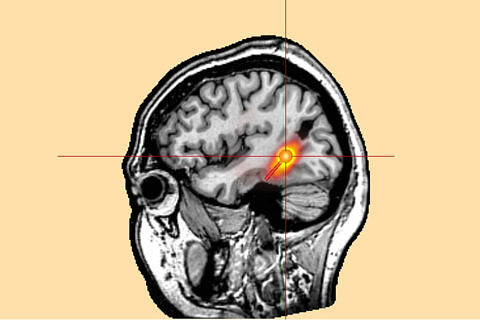Magnetoencephalography increases success of surgery for epilepsy

The study shows that MEG optimises planning and outcomes of surgery
A new study carried out by the Epilepsy Centre at the Department of Neurology at Universitätsklinikum Erlangen shows that magnetoencephalography (MEG) significantly increases the success of surgery for epilepsy patients. The study led by PD Dr. Stefan Rampp, has now been published in the journal ‘Brain – A Journal of Neurology’. It is the largest study of its kind to be performed on this subject with the longest period of investigation.
During their study, the researchers in Erlangen investigated 1000 patients over the course of 28 years. Between 1990 and 2018 these patients all underwent MEG at the Epilepsy Centre at the Department of Neurology at Universitätsklinikum Erlangen and 405 of these patients later underwent epilepsy surgery. The long-term effects of diagnosis using MEG were investigated in the cohort studied up to 20 years afterwards.
Identifying epileptogenic foci
Focal epileptic seizures develop in specific areas in the brain. In many cases, epileptogenic foci can be identified and differentiated from healthy tissue using the right kind of diagnostic procedures. Medication is not effective or insufficiently effective in around 30 percent of patients with focal epilepsy. The goal of epilepsy surgery is therefore to surgically remove the epileptogenic foci in the brains of these patients. This surgery often enables patients to live a life free of symptoms. To localise epileptogenic foci, physicians use electroencephalography (EEG) as well as magnetoencephalography (MEG) to detect the magnetic signals generated by active nerve cells in the brain. These signals can be visualised with curves and these curves have a characteristic pattern in epilepsy patients. Using MEG curves enables physicians to find those areas in the brain where epileptic seizures develop or those areas that are involved in the seizures. MEG is therefore an important diagnostic instrument when planning surgery. The Epilepsy Centre at Universitätsklinikum Erlangen has its own MEG system. The non-invasive examination without radiation exposure or other side effects is conducted on the patient who sits or lies down in a relaxed position.
To locate the epileptogenic zone in a 3D image of the brain, physicians at the Epilepsy Centre combine the results of the MEG examination with the image slices of a magnetic resonance imaging (MRI) scan. This generates a three-dimensional ‘map’ of the brain with precisely marked epileptogenic foci.
Significantly-improved results in surgery
The evaluation of the long-term data in the current study provided three important findings. Stefan Rampp explains: ‘Firstly, MEG allows us to find precisely those epilepsy patients at an early stage who would benefit from surgery. Secondly, the procedure offers significant support in identifying the regions of the brain affected by epilepsy. And thirdly, it contributes to ensuring that patients are free of seizures in the long and short term after surgery.’
According to the results of the study, MEG yields very good results particularly in cases when epileptogenic foci are located outside the temporal lobe of the brain (extratemporal) and when there are no epileptogenic lesions, or pathological changes in the brain. MEG is a useful supplement to other pre-operative diagnostic instruments such as EEG in localising epileptogenic foci and providing information about foci not indicated by other diagnostic methods.
‘Our Epilepsy Centre offers our patients the latest treatment that suits them best,’ summarises PD Stefan Rampp. ‘And because we are a university hospital, we can apply research findings like these current findings directly to patient care.’
Further information
PD Dr. Stefan Rampp
Phone: +49 9131 8533001
stefan.rampp@uk-erlangen.de